
Identify differences in educational resources around the worldDescribe the concept of universal access to education
- Subject:
- Social Science
- Sociology
- Material Type:
- Module
- Author:
- OpenStax College
- Date Added:
- 07/18/2021

Identify differences in educational resources around the worldDescribe the concept of universal access to education
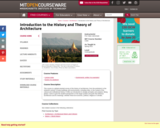
This course is a global-oriented survey of the history of architecture, from the prehistoric to the sixteenth century. It treats buildings and environments, including cities, in the context of the cultural and civilizational history. It offers an introduction to design principles and analysis. Being global, it aims to give the student perspective on the larger pushes and pulls that influence architecture and its meanings, whether these be economic, political, religious or climatic.

The MIT Biology Department core courses, 7.012, 7.013, and 7.014, all cover the same core material, which includes the fundamental principles of biochemistry, genetics, molecular biology, and cell biology. 7.013 focuses on the application of the fundamental principles toward an understanding of human biology. Topics include genetics, cell biology, molecular biology, disease (infectious agents, inherited diseases and cancer), developmental biology, neurobiology and evolution.Biological function at the molecular level is particularly emphasized in all courses and covers the structure and regulation of genes, as well as, the structure and synthesis of proteins, how these molecules are integrated into cells, and how these cells are integrated into multicellular systems and organisms. In addition, each version of the subject has its own distinctive material.
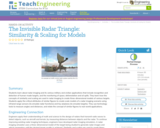
Students learn about radar imaging and its various military and civilian applications that include recognition and detection of human-made targets, and the monitoring of space, deforestation and oil spills. They learn how the concepts of similarity and scaling are used in radar imaging to create three-dimensional models of various targets. Students apply the critical attributes of similar figures to create scale models of a radar imaging scenario using infrared range sensors (to emulate radar functions) and toy airplanes (to emulate targets). They use technology tools to measure angles and distances, and relate the concept of similar figures to real-world applications.
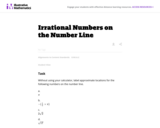
When students plot irrational numbers on the number line, it helps reinforce the idea that they fit into a number system that includes the more familiar integer and rational numbers.
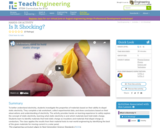
To better understand electricity, students investigate the properties of materials based on their ability to dispel static electricity. They complete a lab worksheet, collect experimental data, and draw conclusions based on their observations and understanding of electricity. The activity provides hands-on learning experience to safely explore the concept of static electricity, learning what static electricity is and which materials best hold static charge. Students learn to identify materials that hold static charge as insulators and materials that dispel charge as conductors. The class applies the results from their material tests to real-world engineering by identifying the best of the given materials for moving current in a solar panel.
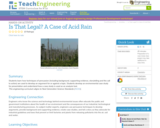
The goal of this activity is to understand how techniques of persuasion (including background, supporting evidence, storytelling and the call to action) are used to develop an argument for or against a topic. Students develop an environmental case study for presentation and understand how a case study is used as an analysis tool.
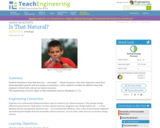
Students will brainstorm ways that they use and waste natural resources. Also, they will respond to some facts about population growth and how people use petroleum. Lastly, students will consider the different ways that engineers interact with and use our natural resources.
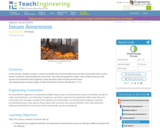
In this activity, students will conduct a survey to identify the environmental issues (in their community, their country and the world) for which people are concerned. They will tally and graph the results. Also, students will discuss how surveys are important when engineers make decisions about environmental issues.
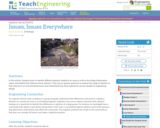
In this activity, students will learn to identify different opinions related to an issue as well as the things (information, values and beliefs) that influence those opinions. They will use an opinion spectrum to analyze the range of opinions in their classroom on environmental issues and understand how these spectrums can be valuable to engineering design.
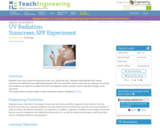
In this activity, students learn how to prevent exposure to the Sun's harmful ultraviolet rays. Students will systematically test various sunscreens to determine the relationship between spf (sun protection factor) value and sun exposure. At the end of the activity, students are asked to consider how this investigation could be used to help them design a new sunscreen.

Students explore the theme of conflict in literature. They learn the difference between internal and external conflict and various types of conflicts, including self against self, self against other, and self against nature or machine. Stories are used to discuss methods of managing and resolving conflict and interpersonal friction. Note: The literacy activities for the Mechanics unit are based on physical themes that have broad application to our experience in the world â concepts of rhythm, balance, spin, gravity, levity, inertia, momentum, friction, stress and tension.
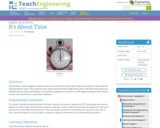
In past times, ocean navigators tossed a piece of wood over the side of their ships and noted how long until the ship passed the wood. They used this time measurement and the length of the ship to calculate their speed and estimate how far they had traveled. In this activity, students act the part of a GPS signal traveling to the receiver to learn how travel time is converted to distance.

Student teams model the Earth's greenhouse effect using modeling clay, ice chunks, water, aluminum pie tins and plastic wrap. They observe and record what happens in this closed environment and discuss the implications of global warming theory for engineers, themselves and the Earth.
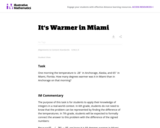
The purpose of this task is for students to apply their knowledge of integers in a real-world context.
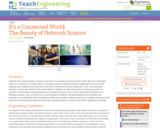
Students learn about complex networks and how to use graphs to represent them. They also learn that graph theory is a useful part of mathematics for studying complex networks in diverse applications of science and engineering, including neural networks in the brain, biochemical reaction networks in cells, communication networks, such as the internet, and social networks. Students are also introduced to random processes on networks. An illustrative example shows how a random process can be used to represent the spread of an infectious disease, such as the flu, on a social network of students, and demonstrates how scientists and engineers use mathematics and computers to model and simulate random processes on complex networks for the purposes of learning more about our world and creating solutions to improve our health, happiness and safety.
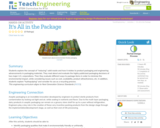
Students explore the concept of "reducing" solid waste and how it relates to product packaging and engineering advancements in packaging materials. They read about and evaluate the highly publicized packaging decisions of two major U.S. corporations. Then they evaluate different ways to package items in order to minimize the environmental impact, while considering issues such as cost, availability, product attractiveness, etc. In addition, students explore "hydropulping" and consider its use as a recycling process.
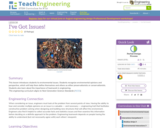
This lesson will introduce students to environmental issues. Students will recognize environmental opinions and perspective, which will help them define themselves and others as either preservationists or conservationists. Students also learn about the importance of teamwork in engineering.
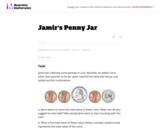
The purpose of this task is to help students articulate their addition strategies and would be most appropriately used once students have a solid understanding of coin values.
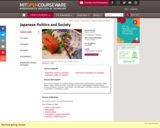
This course is designed for students seeking a fundamental understanding of Japanese history, politics, culture, and the economy. Raw Fish 101" (as it is often labeled) combines lectures, seminar discussion, small-team case studies, and Web page construction exercises, all designed to shed light on contemporary Japan."